Generation Next
Grassroots philanthropies provide seed funding for young investigators
June 15, 2015 | Leslie Hill
R01. One letter and two numbers, often considered the holy grail of grant funding. It is the National Institute of Health’s (NIH) original grant mechanism, typically offering $1 million or more over five years, with the possibility of competitive renewal for years afterward.
But it can take years of research and reams of data to achieve one, and that time is getting even longer.
According to the NIH, in 1980 the average age investigators receive their first R01 has risen from younger than 38 in 1980 to older than 42 today. Close to 18 percent of all primary investigators were age 36 and under in 1980. Today, that number has fallen to about 3 percent.
“We have made deliberate efforts with special philanthropic funds to fill this gap. It’s about ensuring the future of cancer research by supporting the best and brightest,” said Jennifer Pietenpol, Ph.D., Benjamin F. Byrd Jr. Professor of Oncology and director of Vanderbilt-Ingram Cancer Center.
“We risk losing a whole generation of researchers because to be where I’m sitting and looking at how hard it is to get funding moving forward, a lot of people are just giving up,” added Patrick Grohar, M.D., Ph.D., assistant professor of Pediatrics, Pharmacology and Cancer Biology.
One important source of support for young investigators today is small philanthropic organizations, the grassroots groups who take up a cause and raise money, often in honor of a loved one impacted by cancer. Though their gifts may not equal the government’s spending power, they can give a researcher the jumpstart they need to earn future NIH grants or the flexibility to test an unusual idea that just might work.
“The smaller foundations are great for pilot projects to study new directions and gather the basic data,” said Justin Balko, Pharm.D., Ph.D., assistant professor of Medicine. “They can also give more freedom, which moves science much faster. Instead of having to write a new grant or get new approval, we can switch gears on a dime because we think we’ve found something really exciting.”
H. Charles Manning, Ph.D., associate professor of Radiology and Radiological Sciences, said it is often selling foundations short to say that they only fill funding gaps. “Really, they let us tackle high-risk, high-reward ideas that may be too risky for government funding but could really pay off.”
Meet seven young investigators and a selection of the many philanthropic organizations that support them.
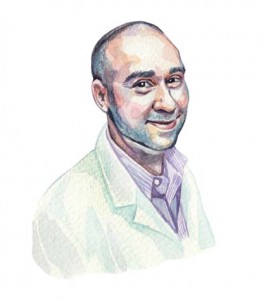 JUSTIN BALKO
JUSTIN BALKO
35
Ph.D., Pharm.D.
Assistant Professor of Cancer Biology
Focus: Breast cancer
Discovery: Inflammatory breast cancer (IBC) occurs when the lymphatic ducts that help to distribute immune cells become clogged with tumor cells, causing the breast to appear very inflamed and swollen. At the genomic level, IBC resembles triple-negative breast cancer, a designation meaning the cancer does not express three receptors, ER, PR or HER2. Some patients with IBC and triple-negative do not respond to chemotherapy, and Balko found that some of these patients have an amplification in the gene JAK2. Balko is working to determine if inhibiting JAK2 would make the tumor more sensitive to chemotherapy.
Impact: This research could result in novel targeted therapies or new drug combinations to treat breast cancer. An additional finding that JAK2 is located in the genome right next to PD-L1, a new immunotherapy target, points to potential directions to explore.
Support: Terry Lynn Arnold founded the IBC Network Foundation after she was diagnosed with the disease and was shocked at how little information and research was underway. Today, the foundation maintains an international support network and funds education and research grants.
“I got better because somebody before me had some sort of research I benefited from. I want better for the people after me,” Arnold said. “We want more tools in the toolbox—really targeted therapies for customized, personalized medicine—and we know there are so many exciting projects that can’t get off the ground because they don’t have that first step in funding.”
 CHRISTINE M. LOVLY
CHRISTINE M. LOVLY
39
M.D., Ph.D.
Assistant Professor of Medicine and Cancer Biology
Focus: Lung cancer
Discovery: Lovly is establishing a new research direction in her lab in small-cell carcinoma, which comprises about 10 percent of lung cancer cases. Based on data that suggests the mutation burden in small-cell tumors correlates to the response to immunotherapy (using the body’s own immune defenses to fight cancer), Lovly is working to understand how immune therapies work in small-cell carcinoma, and also finding novel ways to detect and monitor responses to treatment.
Impact: The National Cancer Institute designated small-cell lung cancer a “recalcitrant cancer,” based on its five-year survival rate of less than 7 percent. According to Lovly, the disease has had no therapy change since 1972 and she hopes to find new drug targets.
Support: The VICC Ambassadors, who call themselves the “next generation of philanthropists,” banded together in 2009 to fund research at Vanderbilt-Ingram Cancer Center. The group of young professionals awarded Lovly a discovery grant this year.
“The paradox to me is that the grant funding is so very tight right now, but we’re in the most exciting period—an explosion—of cancer research,” Lovly said.
“We’re identifying all these novel genes that are mutated, targeting those genes, making new drugs, understanding the interface of the immune system. There is so much excitement, so many new advances and so much forward momentum in cancer research right now. Continuing this momentum will not be possible without continued advocacy and financial support.”
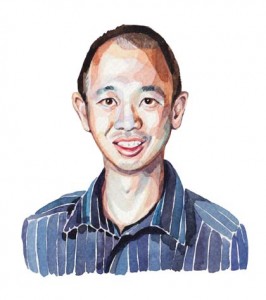 KEN LAU
KEN LAU
36
Ph.D.
Assistant Professor of Cell and Developmental Biology
Focus: Colorectal cancer
Discovery: Lau uses high-dimensional technology and big data to study the complex interaction networks of cancer. He describes it like the social networking website Facebook—each cell is a person who interacts with various networks of friends and colleagues to communicate. By understanding how cells function within their network, Lau can help develop complex treatment strategies, like giving patients multiple drugs and variable doses.
Impact: Lau sees a future in which a patient has a colonoscopy, and from the biopsy tissue, a computation model predicts the course of the disease progression and what type of drug would be effective.
Support: The VICC Ambassadors, a group of young professionals who call themselves the “next generation of philanthropists,” awarded Lau a discovery grant in 2013.
“I’m obliged to do good research whether the money comes from a government agency or private agency, but I know people personally from the Young Ambassadors. Knowing these people, knowing that they would do whatever it takes to support you, just gives me the energy to do better.”
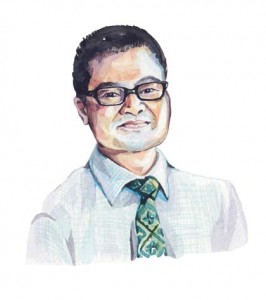 PUCK OHI
PUCK OHI
43
Ph.D.
Assistant Professor of Cell and Developmental Biology
Focus: Cell Division
Discovery: When a cell divides, it replicates its genome and uses a structure called the mitotic spindle to ensure the new copy is separated into the newly formed cell. The formation of the mitotic spindle is mainly driven by a protein called Eg5, making it a common target for anti-cancer drugs. An Eg5 inhibitor worked well in pre-clinical testing but did not have good results in clinical trials. Working from the knowledge that many processes in nature are redundant, Ohi’s lab is investigating a second pathway for formation of the mitotic spindle, which they have determined is driven by the kinesin KIF15. This pathway is fully capable of compensating for a loss of Eg5 function.
Impact: Ohi’s lab personnel are now working to discover drug-like molecules that inhibit KIF15. In quickly growing tumors, those drugs could be combined with inhibitors of Eg5 to knock out the cell’s ability to divide, completely halting tumor growth.
Support: The Marjorie A. Neuhoff Private Foundation was established in 2009 to benefit causes Neuhoff found important and impacted her family, including cancer research. Most recently, the foundation has supported Vanderbilt-Ingram Cancer Center in research and precision medicine efforts.
“These days, philanthropy becomes very important because NIH (National Institutes of Health) budgets are so tight. From when I was in graduate school, salaries have increased while the budget for R01s has remained flat. On top of that there are a bunch of new technologies and instruments that are very expensive. So the cost of everything has gone up without the NIH dollars going up,” Ohi said.
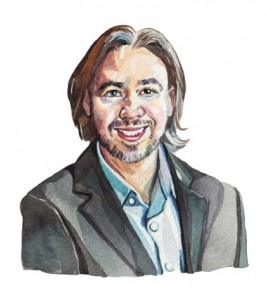 JONATHAN IRISH
JONATHAN IRISH
38
Ph.D.
Assistant Professor of Cancer Biology
Focus: Acute myelogenous leukemia
Discovery: Irish uses mass cytometry—a technology that can measure 30-40 features of individual cells simultaneously—to bring more precision medicine to acute myelogenous leukemia (AML) patients. He says no one has ever really dissected what is happening to cells during chemotherapy, and a new mass cytometry panel developed in his lab gives more information on what proteins cells express and how they signal and react in the treatment environment.
Impact: Research models predicted that chemotherapy would result in a therapy-resistant leukemia stem cell population. Instead, Irish found that cancer cells remaining after treatment can become more distinct in the proteins they express, potentially offering up new drug targets. In an aggressive leukemia where standard therapy has not changed in decades, knowing how cells react in the early stages of chemotherapy can better personalize and guide treatment.
Support: Team Chad, established by family and friends of Nashville native Chad Welch, who died from AML in 2007 at age 30, is dedicated to helping those impacted by leukemia. Through a partnership with the Hematology Helping Hands Fund, which meets basic needs for patients during treatment, the two groups financed the creation of the mass cytometry panel, the foundation for all of Irish’s research in AML. Irish says the funding that builds such foundations is crucial for launching sustainable research.
“It is more difficult to get new ideas that are very cutting-edge funded by NIH because of the traditional reliance on strong preliminary data,” Irish said.
“The NIH can’t tolerate risk right now. The projects getting funded are ones where people have done significant work already, and with the help of Team Chad, we’re into that league. We have proven that this technology really does work, and we’re working to transform that into new grants and clinical studies.”
 PATRICK GROHAR
PATRICK GROHAR
42
M.D., Ph.D.
Assistant Professor of Pediatrics and Cancer Biology
Focus: Ewing sarcoma
Discovery: Ewing sarcoma is a bone or soft tissue tumor occurring most frequently in teens and young adults. Many believe the tumor depends on a protein called EWS-FLI1, but it is considered undruggable, meaning its affinity to bind to a drug is low. There are a few drugs in clinical trials, and Grohar is developing ways to ensure they are “hitting the target.” One is biopsy-based and uses immunofluorescence to visualize the efficacy of target suppression. The other uses an imaging-based biomarker to follow the activity of the drug in patients in real time.
Impact: The biopsy requires surgery, while the imaging test is much less invasive and would allow treatment design that maximizes suppression of the drug target while minimizing toxicity. For patients with relapsed disease and poor prognosis, Grohar says these tests could help determine if the treatment is effective and could also limit toxicity to improve quality of life.
Support: Grohar has received a Reach Grant from Alex’s Lemonade Stand Foundation, which emerged from the front-yard lemonade stand of cancer patient Alexandra “Alex” Scott. Her first lemonade stand raised $2,000 and although Alex died in 2004 at age 8, the Philadelphia-based foundation has evolved into a worldwide movement supporting pediatric cancer research.
“Our mission is to find new and better treatments for kids with cancer, and we think young investigators are the key to the future. We think it’s important to support people who are young in their careers and want to make childhood cancer their lifelong mission,” said Jay Scott, Alex’s father and co-executive director.
“At 8 years old, Alex set a million dollar goal, just setting up in our front yard. We just celebrated raising our 100th million, but that has taken 10 years. Alex would be happy with the results, but would want us to move faster. That’s what keeps us going.”
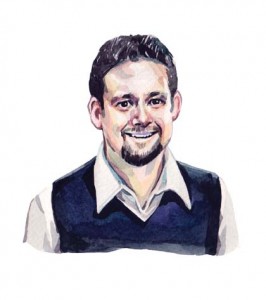 H. CHARLES MANNING
H. CHARLES MANNING
37
Ph.D.
Associate Professor of Radiology and Radiological Sciences
Focus: Pancreatic cancer
Discovery: Through routine CT scans, many patients are diagnosed with indeterminate cystic lesions on their pancreas, and there is no way to know if they are malignant or benign. It’s a difficult decision whether to wait and watch a vicious cancer grow, or to have surgery, which is routinely the extremely difficult and invasive Whipple procedure. Manning is developing a positron emission tomography (PET) imaging test that could help decide a patient’s best course. It capitalizes on the translocator protein that Manning discovered was elevated in high-risk pre-malignant lesions and in pancreatic cancer.
Impact: Pancreatic cancer has a very poor prognosis, often because it is discovered so late. Manning hopes the imaging test could help patients who need surgery get it sooner and avoid it in patients who don’t. This offers not only better quality of life for patients but also reduced health care cost.
Support: Linda’s Hope was founded in Nashville in 2009 after the loss of Meredith Crowley’s mother, Linda, to pancreatic cancer. Its network of young professionals support Vanderbilt-Ingram Cancer Center, including a discovery grant for Manning’s research.
“We think young investigators can be more daring. They may have the crazy ideas that could really work, and we want someone on fire about research,” Crowley said.
“Pancreatic cancer is the most underfunded and most deadly cancer. There are really terrifying statistics, and many people look at it as a death sentence. We want to provide hope. There is not much awareness because there are not survivors to talk about it. It’s up to loved ones to spread the word and raise money.”
